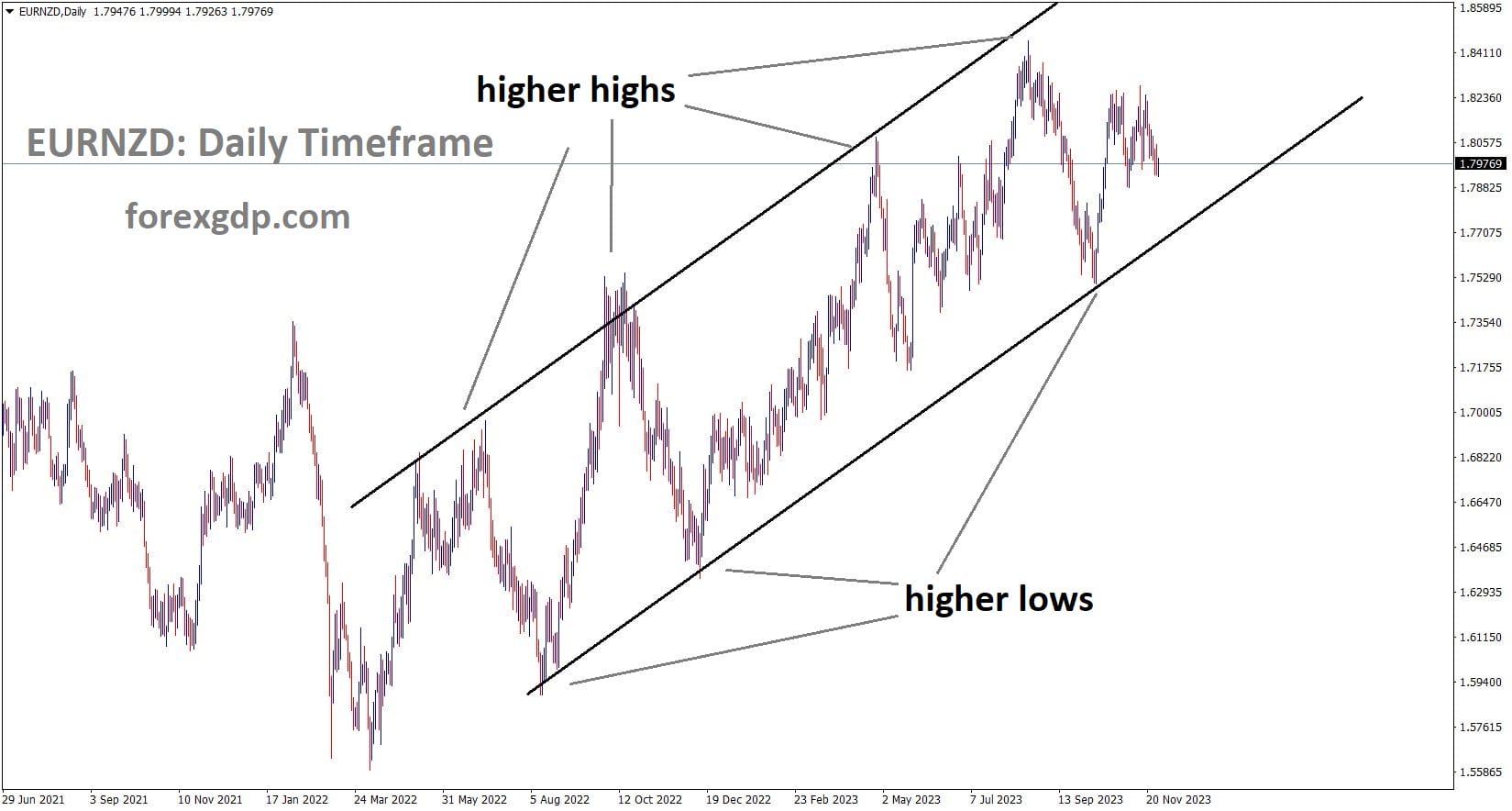EURNZD is moving in an Ascending channel and the market has reached the higher low area of the channel
The Reserve Bank of New Zealand is anticipated to keep the cash rate steady at 5.50% this month. Inflation has decelerated from 6.0% to 5.6%. Additionally, there is a newly formed government in New Zealand, which is expected to transition the RBNZ from a dual mandate to a single mandate. This change is seen as a significant support for the RBNZ. If the amendment to the law is successfully processed, the sole mandate decision is likely to contribute to stabilizing the economy in a recovery-oriented manner.

In the intricate world of monetary policy, New Zealand stands at a pivotal juncture, with its central bank, the Reserve Bank of New Zealand (RBNZ), grappling with inflationary pressures while the government contemplates substantial reforms. This comprehensive analysis delves into the latest developments, expert forecasts, and the potential reforms that could reshape the country’s central banking landscape.
Current Monetary Policy Outlook
Holding Steady: RBNZ’s Stance
As of the latest Reuters poll conducted from Nov. 20-23, all 28 economists unanimously predicted that the RBNZ would maintain its overnight cash rate at 5.50%, marking the fourth consecutive meeting. This decision, expected to persist at least through mid-2024, aligns with the RBNZ’s commitment to addressing inflationary pressures and maintaining stability in the economy.
Despite a slight easing in inflation to 5.6% in the third quarter, down from the previous 6.0%, it remains significantly above the RBNZ’s 1-3% target range.
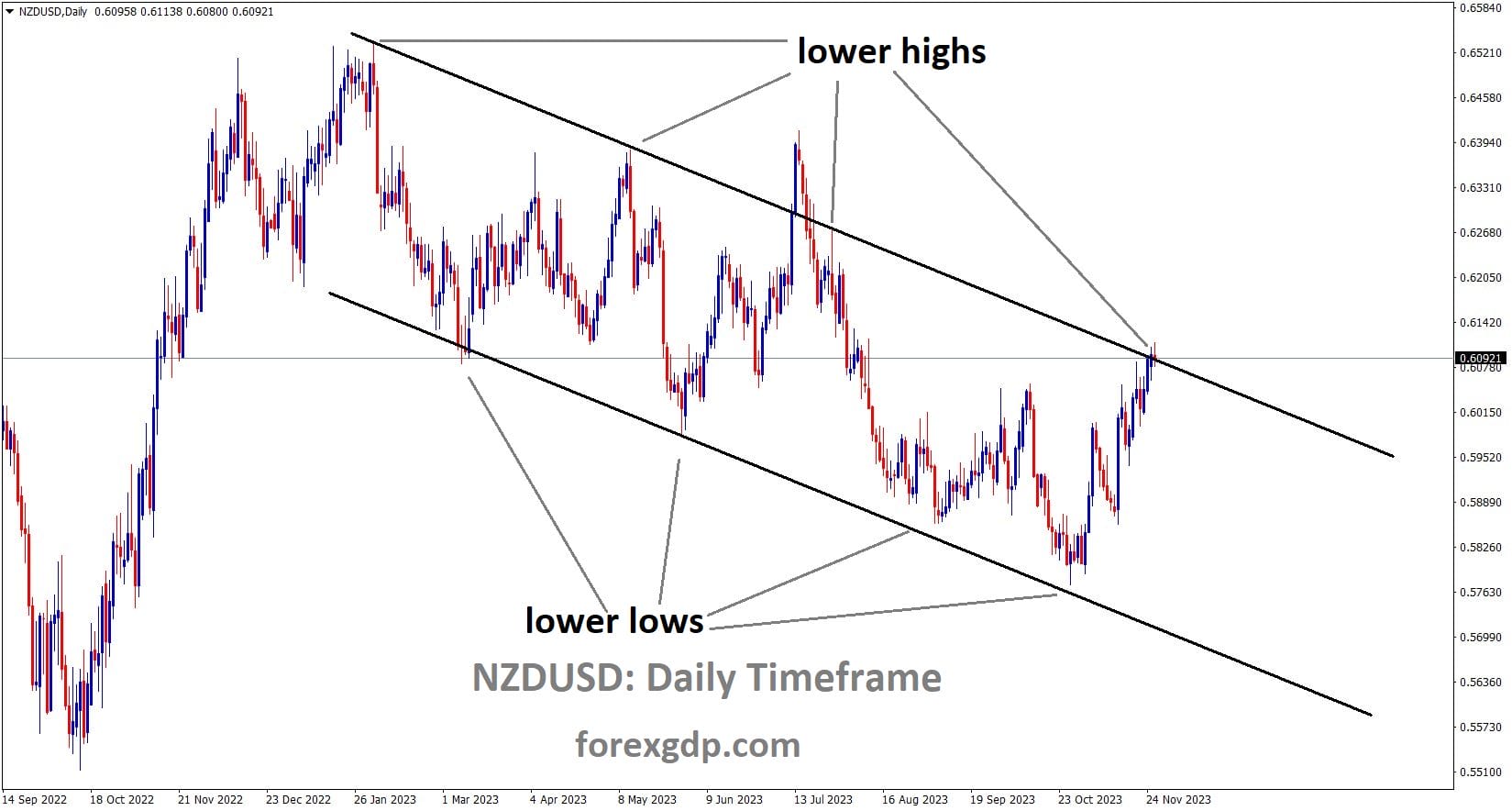
NZDUSD is moving in the Descending channel and the market has reached the lower high area of the channel
This robust inflation supports the central bank’s rationale for holding interest rates, as a proactive measure to ensure economic equilibrium. Analysts anticipate the RBNZ to retain its hawkish stance, being cautious and data-dependent in its approach, closely monitoring economic indicators for any signs of deviation from their projections.
Divergent Views: Bank Projections
Major banks in New Zealand, including ANZ and ASB, project a prolonged period of rate stability, foreseeing no rate adjustments through the end of 2024. This outlook is rooted in the belief that the RBNZ will continue its vigilant approach to monetary policy, maintaining a balance between stimulating economic growth and curbing inflation.
However, diverse opinions emerge within the banking sector, with Westpac forecasting one more hike in February before maintaining rates at 5.75% until the end of 2024. This projection introduces an element of uncertainty, highlighting the varying perspectives on the trajectory of interest rates. Kelly Eckhold, Westpac’s NZ chief economist, acknowledged the need for reassessment, particularly in light of the RBNZ’s updated forecasts and the recent fall in headline inflation. The nuances in bank projections underscore the complexity of forecasting in a dynamic economic environment.

The overall median forecast from the Reuters poll indicates a potential 25 basis point rate cut to 5.25% in the third quarter. Notably, 58% of economists anticipate at least one rate cut by end-September, a quarter later than previously predicted. Interest rate futures, on the other hand, suggest the first cut might materialize in July, reflecting the inherent uncertainty in predicting the timing and magnitude of monetary policy adjustments.
Unraveling Factors: Global Comparisons
Comparisons with global counterparts reveal distinct timelines for rate adjustments. While the U.S. Federal Reserve contemplates a rate cut in the second quarter of 2024, the Bank of England, the European Central Bank, and the Reserve Bank of Australia are not expected to make cuts until the third quarter of the same year. Analysts emphasize the RBNZ’s focus on domestic factors such as the labor market and inflation rather than external influences. This highlights the unique challenges faced by the RBNZ in managing its monetary policy within the context of the New Zealand economy.
Ben Udy, lead economist at Oxford Economics, emphasizes the importance of domestic considerations, stating, “They will be looking at the domestic labor market and domestic inflation. Those factors that are going to convince the RBNZ they need to start cutting rates…not what the Fed does.” This underscores the autonomy of the RBNZ and its commitment to tailoring monetary policy to the specific needs and challenges of the New Zealand economy.
Government’s Reform Agenda
Shifting Mandates: A Government Initiative
Parallel to the monetary policy discussions, New Zealand’s new government contemplates significant reforms at the RBNZ.The coalition government, led by the center-right National Party, aims to amend the Reserve Bank of New Zealand Act. One key change involves reverting to a single mandate concentrating solely on inflation, discarding the existing dual mandate that includes employment.
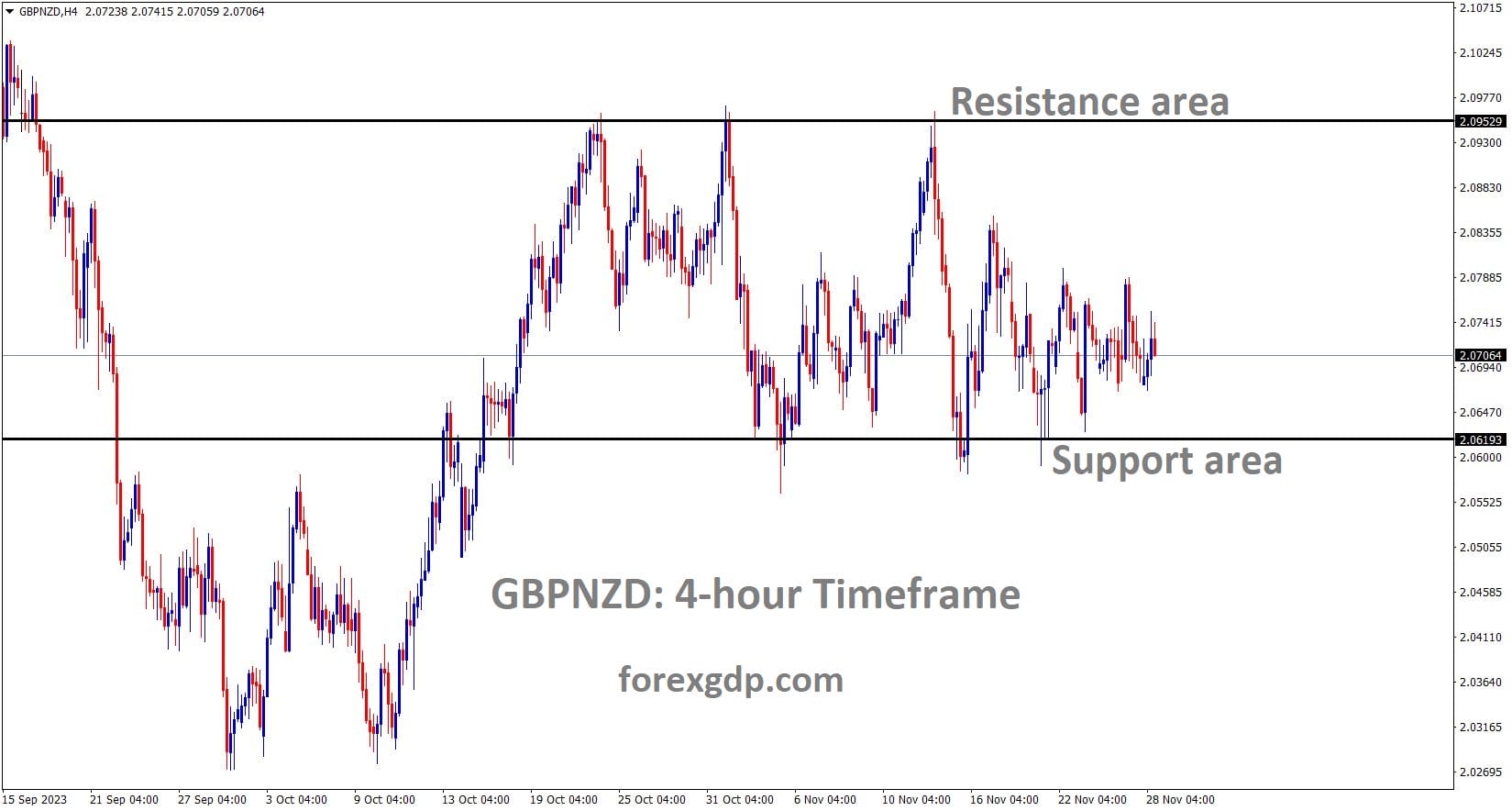
GBPNZD is moving in the Box pattern and the market has rebounded from the support area of the pattern
The decision to shift mandates reflects a broader ideological shift within the government, with the center-right National Party advocating for a return to a singular focus on price stability. The dual mandate, introduced by the Labour Party in 2018, included employment considerations in the RBNZ’s objectives. The National Party argues that returning to a single mandate focused on inflation is an essential reform to curb inflation and ensure the stability of the country’s economic environment.
Additional Reforms: A Libertarian Influence
Beyond the elimination of the dual mandate, the government is exploring additional reforms, reflecting the influence of the libertarian ACT Party. These reforms include evaluating the possibility of assigning time targets for monetary policy, removing the Treasury Department observer from the Monetary Policy Committee, and returning to a single decision-maker model. These proposed changes mark a departure from the alterations introduced by the Labour Party in 2018, which included the dual mandate and an external policy committee.
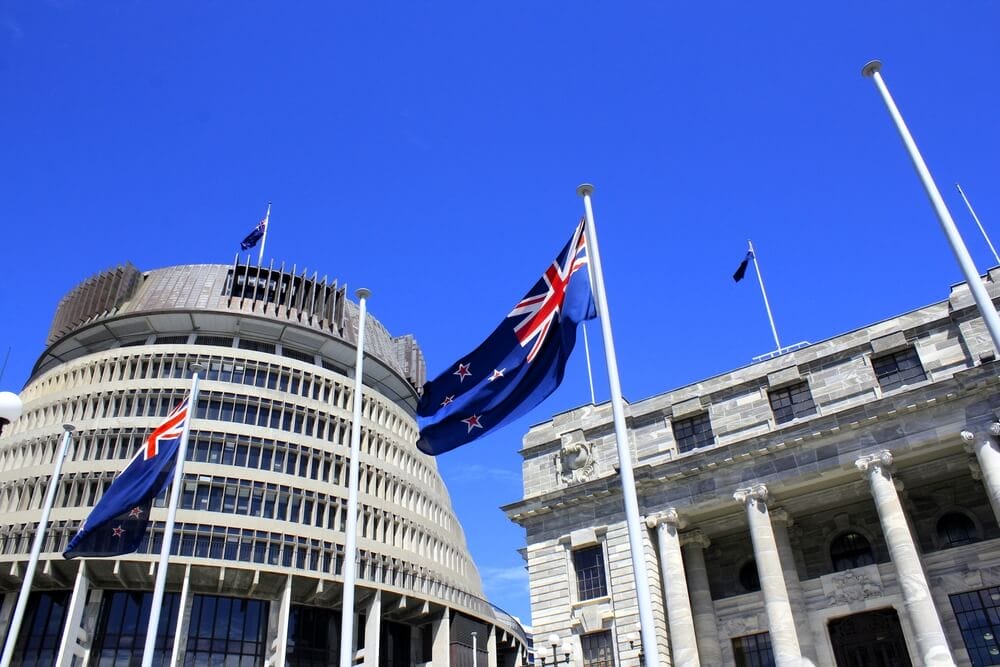
The ACT Party, led by David Seymour, has been a vocal proponent of these additional reforms, advocating for a streamlined and more independent decision-making process within the RBNZ. Seymour expects the government to move with great urgency on the legislative amendments, highlighting the significance of these proposed changes in shaping the operational framework of the central bank.
Market Response and Economic Indicators
Retail Spending Stability
Amid these policy deliberations, New Zealand’s retail spending demonstrated resilience in the September quarter. Adjusted for price movements, retail sales remained unchanged, showcasing an improvement from the 1% drop reported in the preceding three-month period. This stability, coupled with a year-on-year decline slowing from 3.9% to 3.4%, aligns with expectations of a steady interest rate environment.
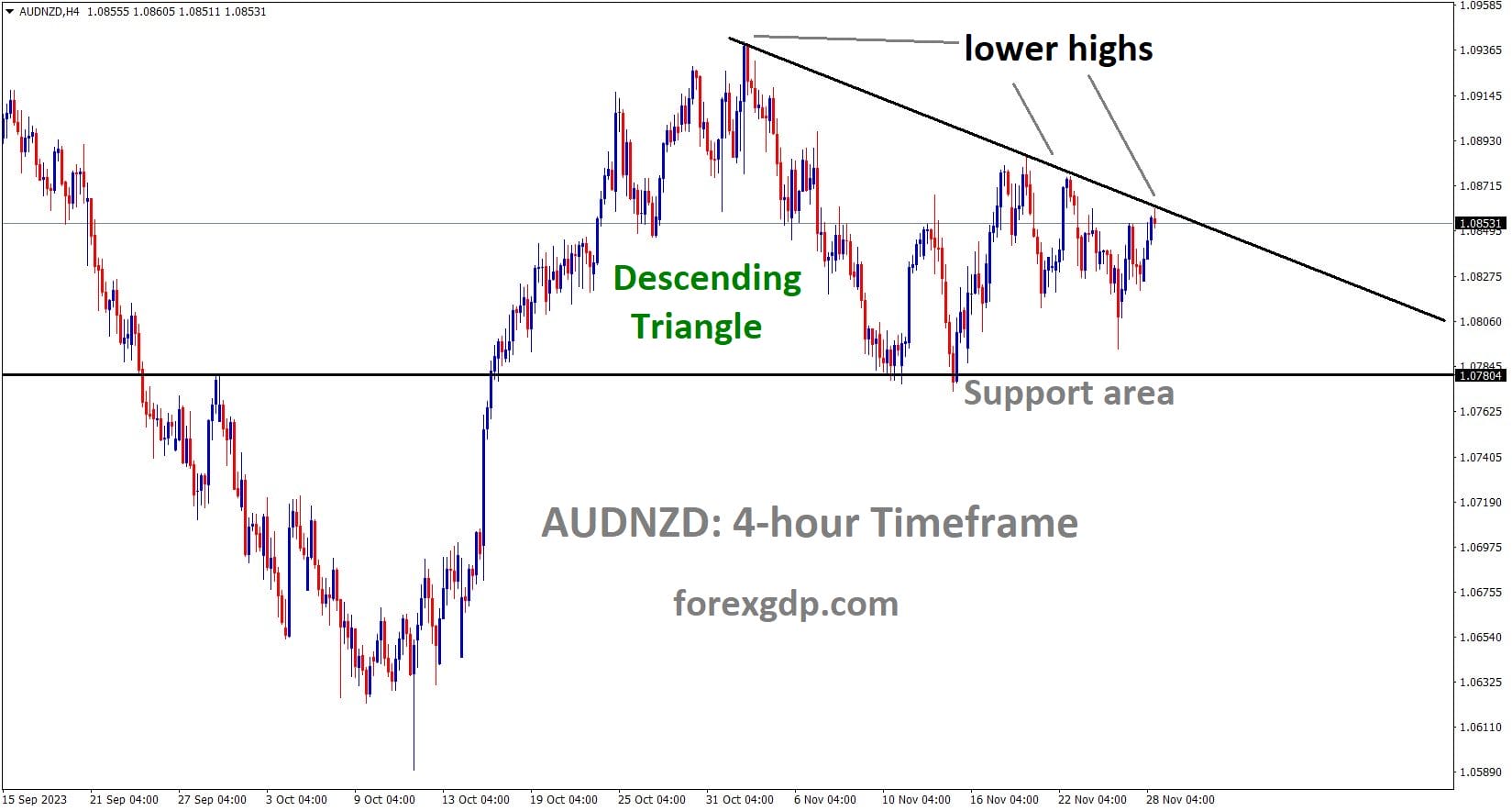
AUDNZD is moving in the Descending triangle pattern and the market has reached the lower high area of the pattern
The stability in retail spending provides a nuanced perspective on the overall economic health, indicating a degree of consumer confidence despite the uncertainties surrounding monetary policy and potential reforms. However, the broader economic impact and the implications for interest rates extend beyond the immediate retail sector, encompassing factors such as employment, investment, and inflation expectations.
Per-Capita Spending Challenges
However, a closer look reveals challenges in per-capita spending, hindered by the RBNZ’s restrictive monetary measures to curb inflation. Despite a stabilized retail environment, weak per-capita spending is evident, exacerbated by the central bank’s commitment to achieving its inflation target. The decision to prioritize price stability has implications for individual spending patterns, reflecting the delicate balance central banks must strike between stimulating economic growth and managing inflationary pressures.
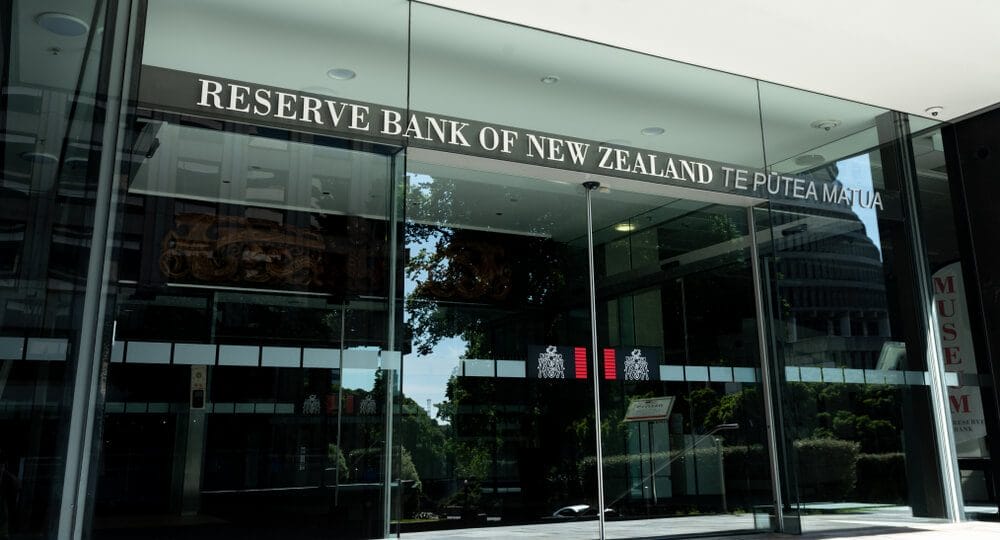
The weak per-capita spending, juxtaposed with overall retail stability, highlights the complexities faced by the RBNZ in navigating its dual mandate or potential shifts toward a singular focus on inflation. It underscores the broader socioeconomic considerations that policymakers must weigh in their decision-making processes, acknowledging the interconnected nature of various economic indicators.
Conclusion
As New Zealand navigates the complexities of its monetary policy landscape, the RBNZ’s steadfast commitment to addressing inflation and the government’s contemplation of sweeping reforms add layers of intrigue. The divergence in expert opinions regarding future rate adjustments, coupled with global comparisons and economic indicators, paints a nuanced picture of the challenges and opportunities facing New Zealand’s economic future.
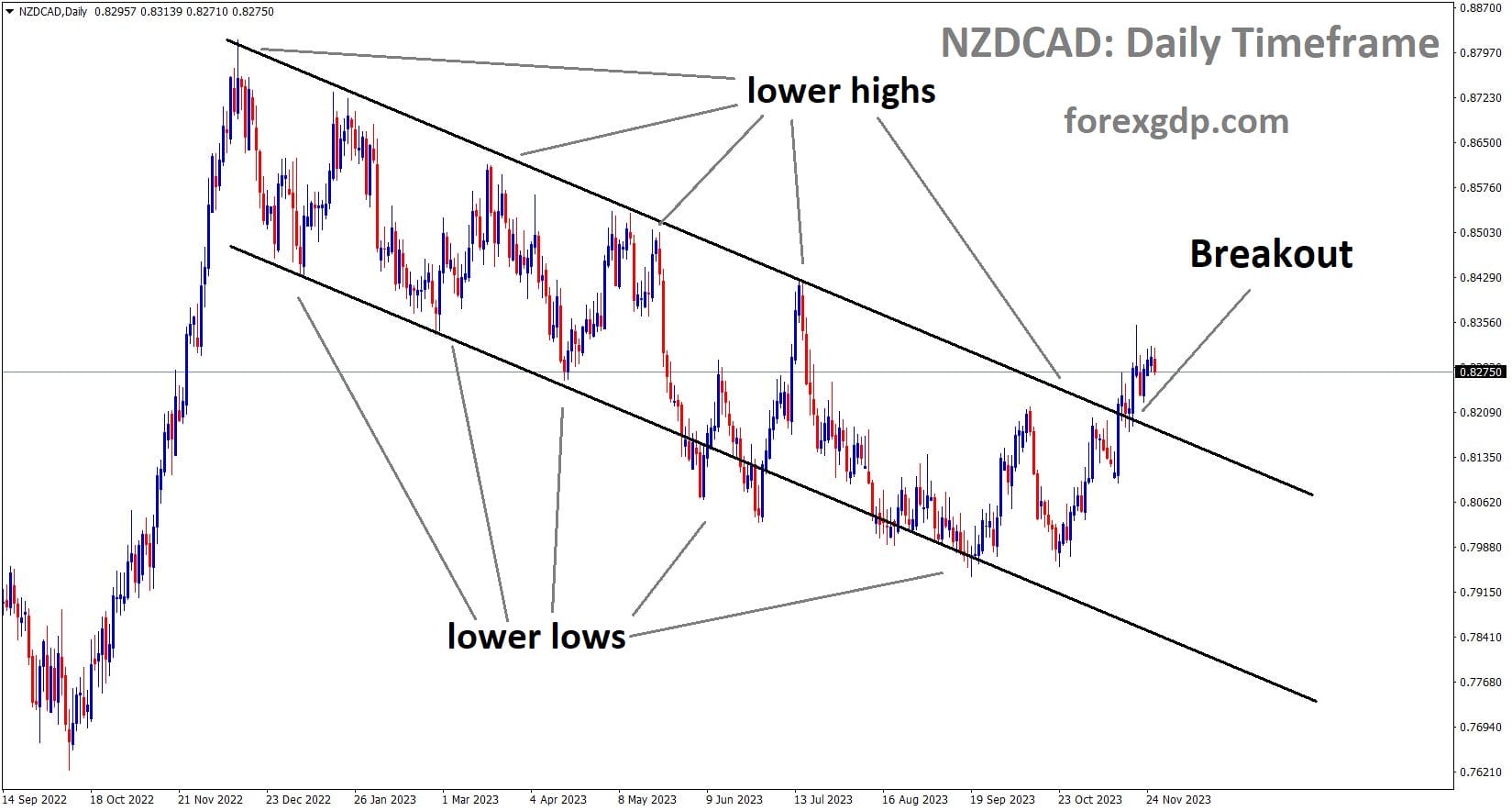
NZDCAD has broken the Descending channel in upside
The forthcoming decisions, both in monetary policy and potential reforms, will undoubtedly shape the trajectory of the country’s financial landscape in the years to come. The delicate balance between stimulating economic growth and managing inflation, coupled with the influence of ideological shifts within the government, underscores the dynamic nature of central banking in a rapidly evolving economic environment. As stakeholders await the outcomes of the RBNZ’s decisions and potential legislative amendments, the resilience of New Zealand’s economy will continue to be tested against the backdrop of global economic uncertainties.
Don’t trade all the time, trade forex only at the confirmed trade setups.
Get more confirmed trade setups here: forexgdp.com/buy/

